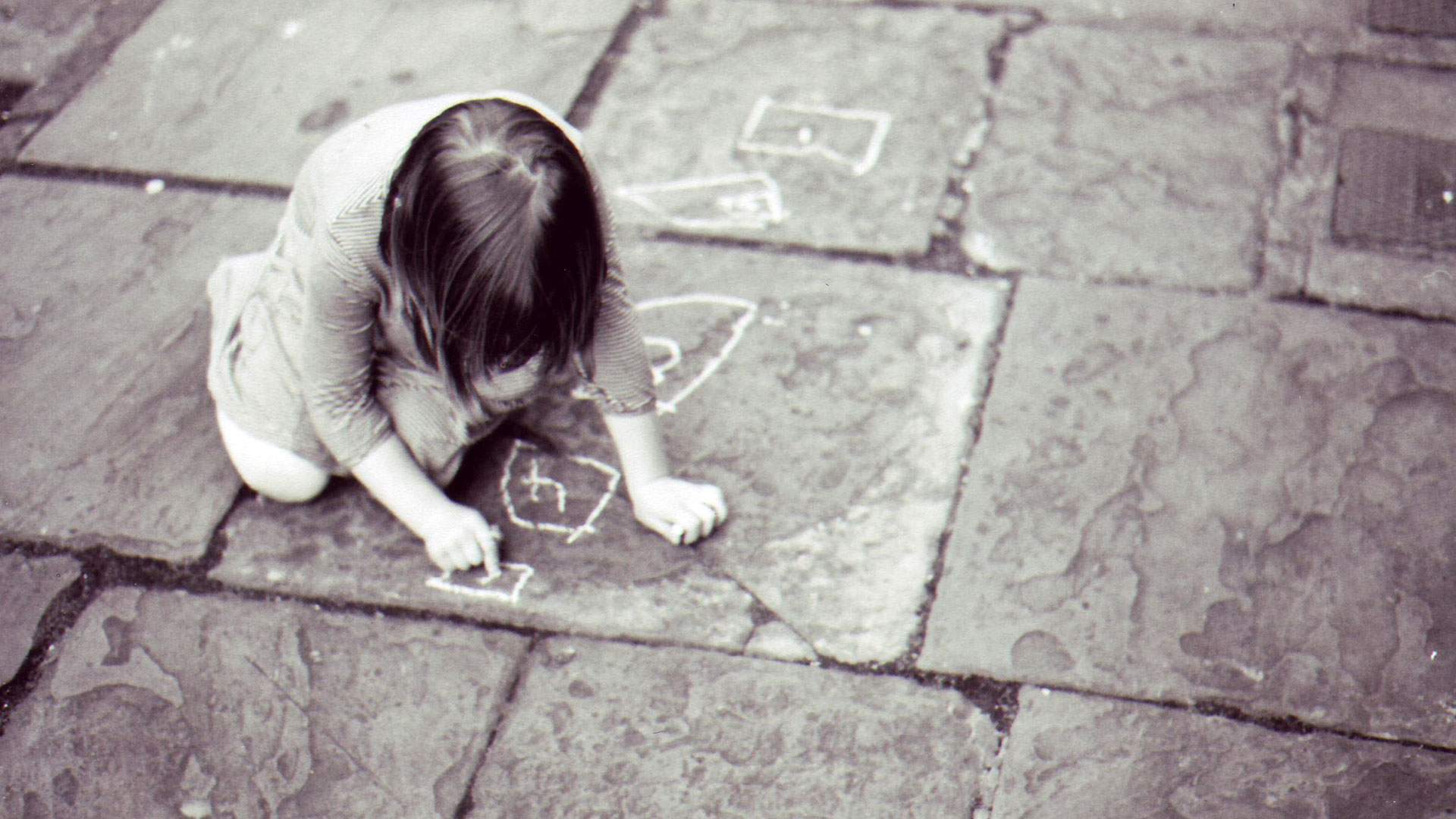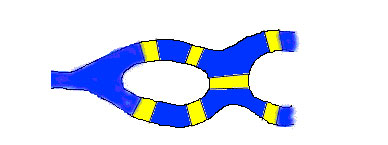One of the fundamental components of our Eye Level math program is letting students work at their own pace and attempt to fix their mistakes. While it may seem unproductive,students actually benefit greatly from making mistakes in math. Below is an article from Katrina Schwartz at KQED News where she reports on the teaching theories of David Wees, a formative assessment specialist in mathematics in New York. Wees shares why the focus should be on students’ thinking as they attempt to solve math challenges, and not simply whether they reach the correct answer.
Seeing Struggling Math Learners as ‘Sense Makers,’ Not ‘Mistake Makers’
Katrina Schwartz
In discussions of progressive and constructivist teaching practices, math is often the odd subject out. Teachers and schools that are capable of creating real-world, contextualized, project-based learning activities in every other area of school often struggle to do the same for mathematics, even as prospective employers and universities put more emphasis on its importance.
This struggle may come from a fundamental misunderstanding about the discipline and how it should be taught.
That’s the stance David Wees has arrived at after more than 20 years of teaching at many different kinds of schools all over the world. It has taken a long time, but Wees has stopped labeling student work with the word “mistake” and has started paying attention to what he can learn about how students are thinking, based on the work (right or wrong) they produce.
“I want to know the ways that they are thinking rather than the ways they are making mistakes,” said Wees, who now works as a formative assessment specialist in mathematics for New Visions for Public Schools, an organization supporting public school teachers in New York City. “My interpretation that they’re making a mistake is a judgment and usually ends my thinking about what they are doing.”
In that situation, it’s extremely tempting to tell the student where he or she went “wrong” and move on. But what does the student learn in that scenario? Not much, beyond how to memorize computational formulas, said Wees.
“My goal is for them to become the truthmakers,” Wees said. “I’m trying to build a mathematical community where something is true when everyone agrees it’s true.” To do that, he asks students to talk through mathematical ideas, struggle with them and give one another feedback. “A major goal of math classrooms should be to develop people who look for evidence and try to prove that things are true or not true,” Wees said. “You can do that at any age”
Fundamentally, Wees wants to increase the amount of thinking “at the edge of their knowledge” that students do. “There’s lots of evidence that what we think about is what we know later,” he said. “I want to increase the amount of thinking going on in math class.”
Wees points out that while practice is important, students are repeating an action with which they are at least a little familiar.
He wants students to struggle in the zone of proximal development, where they don’t quite understand yet but aren’t frustrated. When working in New York public schools, Wees found if he gave students problems to solve that allowed for different points of entry, all students could struggle together. One student might be more advanced than another, but if each could access some element of the problem, they discussed it together and either relearned core concepts or were exposed to more advanced ones.
For example, Wees asked his students to solve the Seven Bridges of Konigsberg problem. It goes like this: A river flows through the middle of Konigsberg, forming an island in the middle and then separating into two branches. The citizens of Konigsberg have built seven bridges to get from place to place. The people wondered if they could walk around the city in such a way that they would cross each bridge once and only once.

“The kids understood the problem and virtually all attacked it,” Wees said. “Some kids worked on it for weeks.” Wees posted it in the hallway and at one point almost all the ninth-graders were working on the problem. Students got tired of carefully drawing the bridges, river and city over and over, so they naturally began to abstract the map into something that looked like a graph.
No student solved the problem — in fact, the mathematician Leonhard Euler proved it was impossible. Wees showed his students Euler’s proof, and pointed out how similar their graphing was to his. Wees said kids were a little mad when they discovered there was no answer, but they enjoyed the experience and along the way realized that learning is about the process.
“Over time I tended to embed projects of various kinds because at the time I was thinking I needed to get them interested,” Wees said. “They weren’t interested directly in the mathematics itself because they’d experienced so much failure, so I was trying to get them excited.”
Slowly throughout his career, Wees began to see that projects could be more than just excitement builders — they could be the vehicle for teaching content and the assessment. And the range of mathematical ideas was much broader than he thought if he used his imagination.
“The range of mathematical ideas the kids struggled with were pretty wide,” Wees said. After working in inner-city schools, Canadian schools and international schools for expat kids in London and Bangkok, Wees has come to the conclusion that all kids make the same kinds of mistakes.
“It was clear to me that the mistakes in some cases were a function of the mathematics and the way kids think about the math, rather than whether the kid is rich or poor,” he said.
MATHEMATICIAN’S LAMENT
Over the course of his career, through trial and error, Wees came to see what Paul Lockhart describes in his essay, “The Mathematician’s Lament”:
By concentrating on what, and leaving out why, mathematics is reduced to an empty shell. The art is not in the “truth” but in the explanation, the argument. It is the argument itself which gives the truth its context, and determines what is really being said and meant. Mathematics is the art of explanation. If you deny students the opportunity to engage in this activity— to pose their own problems, make their own conjectures and discoveries, to be wrong, to be creatively frustrated, to have an inspiration, and to cobble together their own explanations and proofs— you deny them mathematics itself. So no, I’m not complaining about the presence of facts and formulas in our mathematics classes, I’m complaining about the lack of mathematics in our mathematics classes.
KIDS ASK THREE KINDS OF QUESTIONS
When doing his master’s in education technology and the pedagogy around it, Wees learned to categorize the three kinds of questions students ask and changed his teaching practice entirely. Kids ask questions: 1) to find out if they did the problem right; 2) because the teacher is standing near them and they can, and; 3) occasionally they ask “I wonder what if” questions, which show they are thinking about the math. Wees took to not answering the first two kinds of questions and encouraging the third.
“I went from really trying to answer questions and support them in that way, to really trying to think of questions that would support them to learn it themselves,” Wees said. He found himself often asking the same question, whether a student had gotten the problem right or wrong. He’d ask them to explain their answer or how they could check to see if they were right or wrong.
“I became better at having a poker face so I wasn’t communicating whether they were right or wrong,” Wees laughed. When students asked questions because he was nearby, he deferred them to their peers, who often explained the math quite well.
THE TIME FACTOR
Many math teachers will say a community of learners like Wees describes is a fairytale classroom with no time constraints and no standards to cover. They say their jobs depend on covering all the topics on the test and helping students correct their errors, not taking days to uncover the thinking behind that error. Wees acknowledges the limitations that many math teachers struggle with, but points out the way most people teach math now doesn’t work, so it could be considered a waste of time anyway.
“Whatever time people are putting in to teach mathematics is kind of wasted in many cases,” Wees said. “Are [students] learning anything that they can transfer, that they can use in other contexts? If they’re not doing these things, then I don’t know what they’ve learned.”
He points out students often did very well on the New York Regents test when teachers focused on teaching specific kinds of problems, but whether kids learned the full range of mathematics possible that year is another thing entirely.
Beyond time limitations, a broader problem is that many math teachers know only one way to solve the problems they teach. Even professional development often focuses on breadth instead of depth, with the result that many teachers carry the same fundamental gaps in math understanding as their students.
“We have generations of math-phobia,” said Laura Thomas, director of the Antioch Center for School Renewal. “A lot of teachers who teach math are second- and third-generation math-phobic, so our system is really calculation-based as opposed to applying in context.”
Thomas said it takes a person with deep understanding of both math and project-based pedagogy and coaching to effectively lead students through what is often a very messy process requiring students to use problem-solving skills to figure out solutions, rather than being told what skills to apply.
Wees is frustrated at how linear math learning has become. “The standards are a list of things the kids are supposed to do, not a list of things you have to teach,” Wees said.
In other words, many standards can be embedded in a problem so that students are exposed to lots of ideas in different ways. When teachers focus on clusters of standards as opposed to individual ones, “that kid who doesn’t get one idea on Thursday is going to get 10 or 12 other ways of looking at the idea in the unit,” Wees said.
For example, a teacher might give students this math problem: “I’m traveling 50 mph. How far will I have driven in 10 minutes?” This problem does not confuse students. They know what they are being asked and in discussing it they could hit many standards — multiplication, number lines, writing down possible solutions to think it through and fractions, to name a few.
“The kids get exposed to all of the standards every day in different ways,” Wees said. And more importantly, they’re having to think through the standards every day, leading to a deeper level of learning.
“You really have to understand math is a range of ideas and not individual standards,” Wees said.
When teachers are comfortable teaching in this more complex style, they are able to offer the multiple points of entry that allow for differentiation to take place — but in community, not isolation. If students are segmented out to learn only with the students “at their level,” some students will be in danger of never moving past fractions.

